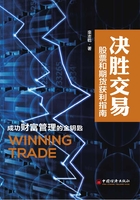
附:本例所使用的自适应均线的代码(通达信)

格兰维尔200日均线八大法则
约瑟夫.格兰维尔先生于20世纪60年代所著的《Strategy of Daily Stock Market Timing for Maximum Profit》提出了200日均线特别适合用于美国股市交易,因为200日均线信息含量最多,比10~50日均线稳定性高得多,所以价格穿越200日均线时更加具有交易价值。格兰维尔先生还提出了基于200日均线交易的八大法则,这里作者不想对其进行翻译了,因为网上的中文翻译太多了,我们看看原文是怎么说的:
1. If the 200 day average line flattens out following a previous decline,or is advancing,and the price of the stock penetrates that average line on the upside,this comprises a major buying signal.
2. If the price of the stock falls below the 200 day moving average price line while the average line is still rising,this also is considered to be a buying opportunity.
3. If the stock price is above the advancing 200-day line and is declining toward that line,fails to go through and starts to turn up again,this is a buying signal.
4. If the stock price falls too fast under the declining 200-day average line,it is entitled to an advance back toward the average line and the stock can be bought for this short-term technical rise.
5. If the 200-day average line flattens out following a previous rise,or is declining,and the price of the stock penetrates that line on the downside,this comprises a major selling signal.
6. If the price of the stock rises above the 200 day moving average price line while the average line is still falling,this also is considered to be a selling opportunity.
7. If the stock price is below the falling 200-day line,and is advancing toward that line,fails to go through and starts to turn down again,this is a selling signal.
8. If the stock price advances too fast above the advancing 200 day average line,it is entitled to a reaction back toward the average line and the stock can be sold for this short-term technical reaction.
格兰维尔先生还给了两个例子来辅助说明如何针对200日均线应用这八大法则,如图5-7所示。

图5-7 针对200日均线应用格兰维尔法则
要提醒读者的是,这八大原则在今天海外交易界其实几乎没人提及,为什么?除了直接交叉给出了比较明确的交易参考点,其余的都相对需要主观经验。另外,均线在盘中是随时起伏的,什么叫走平也相对难以判断。
还要额外说一下的是,不管这八大法则是否好用,如果您还在基于5日均线、10日均线、20日均线、30日均线等短期的均线使用这八大法则,那么您确实该思考下为什么格兰维尔先生是根据200天均线提出的这8条原则,而并没有说适用于任何周期的均线。我们不是不能够创新,基于个180天、220天、250天均线应用这8条原则也未尝不可,但是请别忘了应用这8条规则的前提:均线的稳定性。所以要提醒各位读者,学习交易首先学会独立的思考,不要人云亦云,更不要死读书、读死书。
最后,虽然格兰维尔先生创造了所谓的均线应用八大法则,但移动平均线并非格兰维尔所创造。从目前有文字记载的史料看,R.H.Hooker先生1901年就计算过移动平均值(后记载于1912年的书籍《Elements of Statistical Method》),所以这个方法年代实在太久远,当时格兰维尔先生还未出生。
均线到底怎么用
上述均线系统作者以及身边的很多交易者都曾使用过,长周期均线系统的优点是能够让交易者在真正大行情到来时更容易拿住单子,但是缺点是震荡市会很难受。作者自己编写程序对上证指数的采用60日均线系统严格交易进行了测试,考虑到交易成本,回测的结果如图5-8所示。

图5-8 上证指数60日均线系统回测净值曲线图
我们可以看到,回测从2012年开始交易,遇上了震荡市,到2014年中亏损超过四成,随后的牛市来临,最高获利近60%,然后随着市场的快速下挫,获利收窄为20%。而采用短周期的均线进行测试,结果就不那么理想了,如图5-9所示。

图5-9 上证指数20日均线系统回测净值曲线图
图5-9中20日均线严格交易的净值走势可以说多数时间处于稳亏状态,这是价格反复上下穿越所造成的后果。
综合这两个回测结果,作者认为如果要使用均线,也应该使用周期相对长点的均线,或者尝试使用自适应均线。当然,使用斯坦利•克罗的多均线交叉系统也值得尝试,因为本质上这个系统是否做多或者做空开仓也是依赖于长期均线作为必要条件之一。
关于作者是怎么使用均线的?这个问题的答案是作者现在不使用均线,因为我们看到整个均线原理的介绍中,完全没有道氏理论什么事。均线系统只是很大程度上与道氏理论暗合。当然,交易的世界百家争鸣,使用均线十分成功的交易高手也大有人在,使用方法也可能远超过作者的想象。